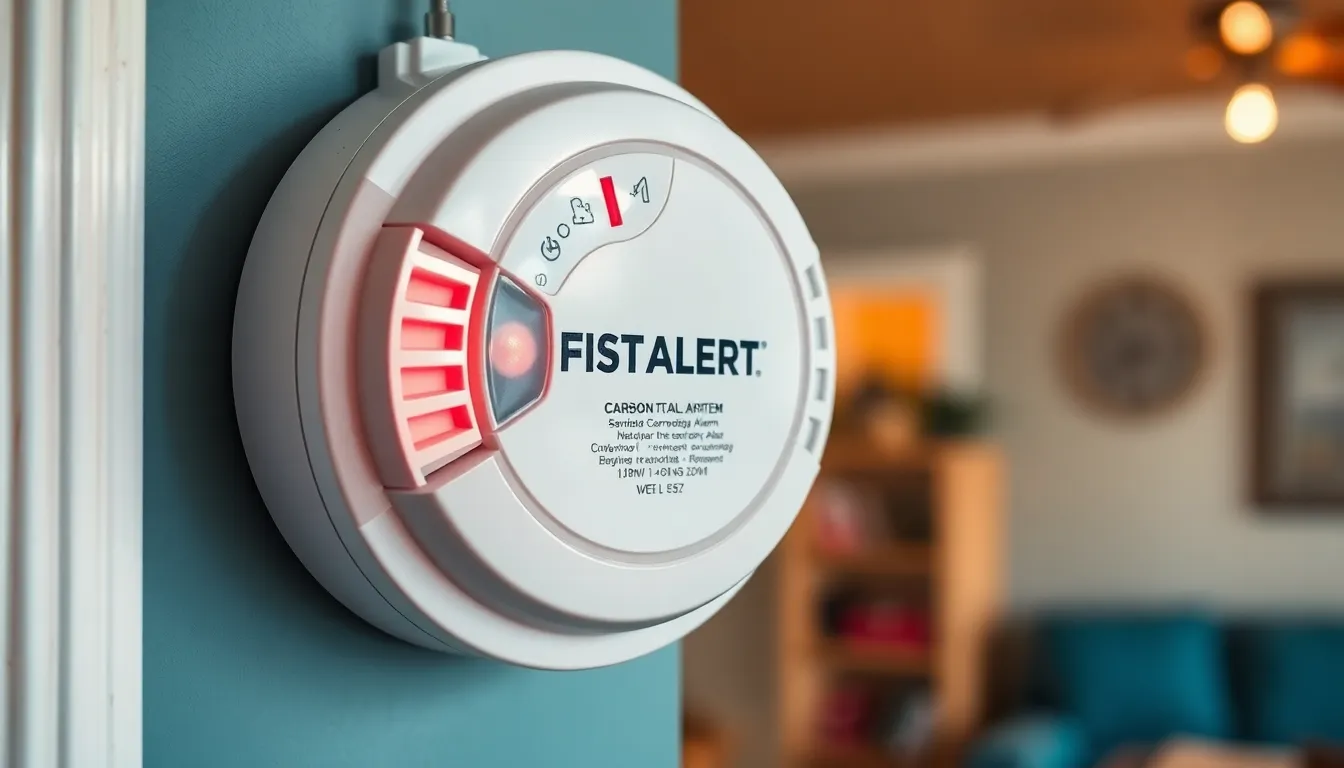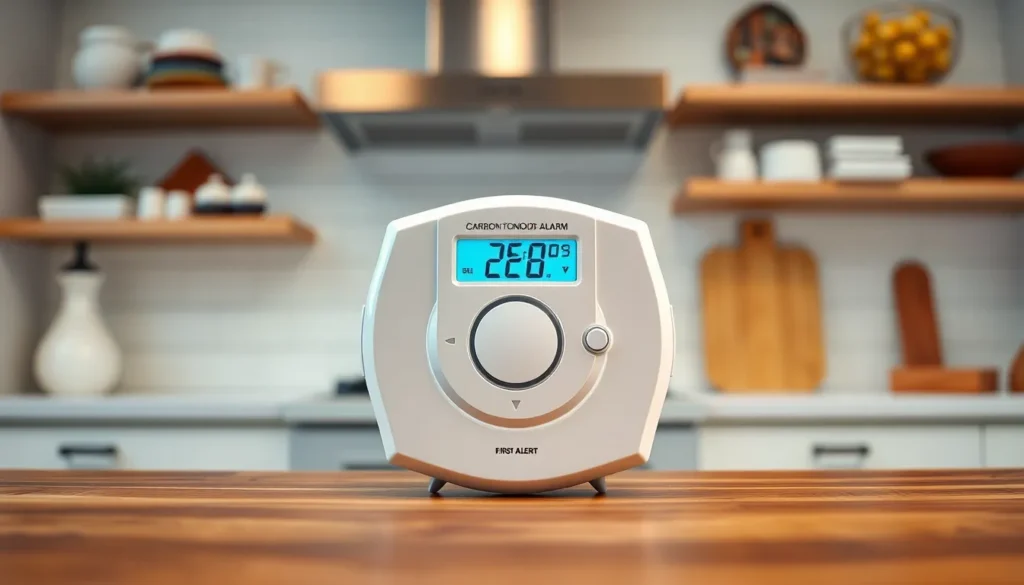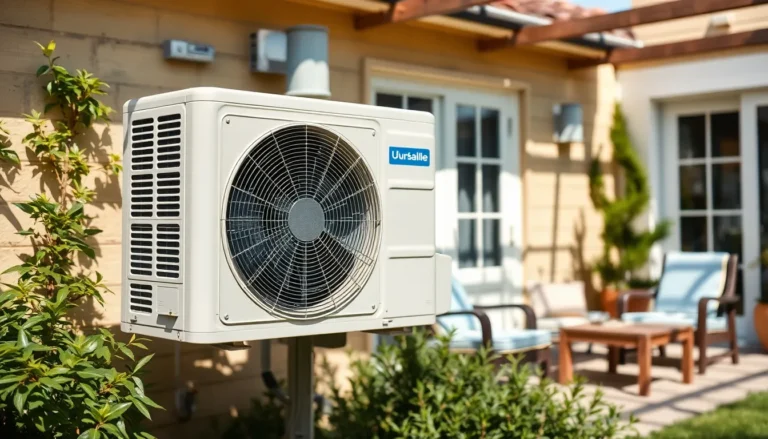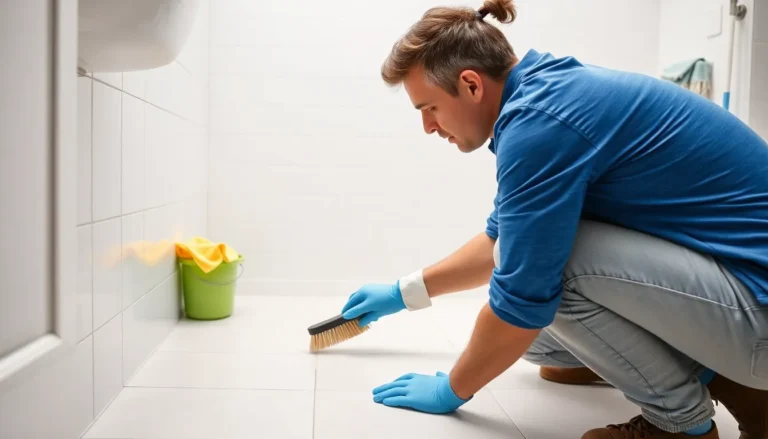When a First Alert carbon monoxide alarm starts beeping five times, it’s not just a quirky sound to spice up your day. It’s a serious signal that something’s off, and it deserves your immediate attention. Imagine your alarm is like that overly dramatic friend who insists on telling you when things are amiss—this time, it’s not just a case of spilled coffee!
Table of Contents
ToggleOverview of First Alert Carbon Monoxide Alarms
First Alert carbon monoxide alarms play a crucial role in residential safety. These devices detect carbon monoxide, a colorless and odorless gas that can result from burning fuel. Installing alarms in key areas, such as near sleeping spaces, enhances personal safety.
Alarm functionality includes alerts that vary based on the level of danger. A sequence of five beeps indicates a serious issue requiring immediate attention. This sound signals the presence of carbon monoxide in the environment, prompting evacuation and further action.
The design incorporates various technologies for accurate detection. Electrochemical sensors, for instance, provide reliable readings of gas levels. Many models offer digital displays, showing real-time CO levels and battery status, enhancing user awareness.
Regular maintenance is vital for optimal performance. Users should test alarms monthly and replace batteries at least once a year. Additionally, replacing the entire unit after seven years ensures continued reliability and compliance with safety standards.
Different models feature unique characteristics tailored to specific needs. Some alarms connect to home security systems, offering alerts via smartphone notifications. Others include voice alerts, providing clearer warnings than beeping alone.
Understanding the function and significance of First Alert alarms fosters responsible home safety. By recognizing the importance of the five-beep signal, individuals can address potential hazards promptly. Prioritizing safety measures helps reduce risks associated with carbon monoxide exposure.
Understanding the Beep Patterns

The First Alert carbon monoxide alarm uses distinct beep patterns to convey important safety information. One critical pattern consists of five beeps in succession, signaling a serious threat.
What the 5 Beeps Indicate
Five beeps from a carbon monoxide alarm indicate the presence of carbon monoxide in the environment. This urgent warning requires immediate evacuation from the area. Continuous exposure to carbon monoxide can lead to severe health issues, including unconsciousness or even death. Understanding this signal is essential for ensuring personal safety. Ignoring the five-beep alert could result in life-threatening situations.
Differentiating Between Alarm Types
Different alarm sequences exist for various types of emergencies. In addition to the five beeps for carbon monoxide presence, alarms may emit other patterns for low-battery warnings or system malfunctions. Each pattern serves a specific purpose, allowing users to respond appropriately. Familiarity with these distinct beeping signals can enhance overall safety. Knowing the difference aids in timely intervention, ensuring the alarm functions as intended.
Importance of Carbon Monoxide Alarms
Carbon monoxide alarms play a vital role in maintaining household safety. These devices detect the presence of carbon monoxide, a deadly gas that can accumulate without notice.
Health Risks of Carbon Monoxide Exposure
Exposure to carbon monoxide presents serious health risks. Symptoms can include headache, dizziness, nausea, and confusion, with prolonged exposure resulting in unconsciousness or death. Children, the elderly, and those with pre-existing health conditions are particularly vulnerable. It’s crucial to recognize these dangers and take preventive measures to mitigate risk.
How Alarms Protect Your Family
Alarms provide essential protection for families against carbon monoxide exposure. They offer real-time monitoring, alerting occupants to dangerous levels immediately. Additionally, modern alarms’ capabilities include clear signals for various danger levels, allowing individuals to respond effectively. Installing these devices near sleeping areas enhances protection during vulnerable hours. Regular maintenance ensures alarms operate correctly, significantly reducing risks associated with carbon monoxide in homes.
Maintenance Tips for First Alert Alarms
Regular maintenance ensures First Alert alarms function effectively. Performing routine checks reinforces household safety, especially in protecting against carbon monoxide threats.
Regular Testing and Battery Replacement
Test alarms monthly to confirm they operate correctly. A simple press of the test button initiates the alarm sound, verifying functionality. Replace batteries at least once a year for uninterrupted performance. Consider using high-quality alkaline batteries for optimal results. Indicators show low battery status, prompting timely replacement. Remember to replace the entire alarm unit every seven years to maintain advanced detection capabilities.
Troubleshooting Common Issues
Identify issues promptly to ensure safety. If the alarm emits continuous beeping, check for malfunctions or replace a depleted battery. An occasional chirp might indicate low battery power, necessitating immediate action. First Alert alarms also provide error codes on digital displays, assisting in diagnosing specific problems. Address these alerts quickly to maintain effective operation. Lastly, ensure the device remains free from dust and debris to enhance its sensitivity and performance.
Understanding the significance of the five beeps from a First Alert carbon monoxide alarm is crucial for maintaining safety at home. This alert serves as a vital warning that demands immediate action. Ignoring it could lead to severe health risks for everyone in the household.
Regular maintenance and proper installation of these alarms enhance their effectiveness in detecting carbon monoxide. By being familiar with the different beep patterns and responding appropriately, individuals can safeguard their families against this invisible threat.
Prioritizing safety measures and staying informed about alarm functionality can make a significant difference in preventing carbon monoxide exposure. Taking these steps ensures a safer living environment for all.






